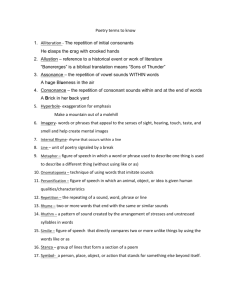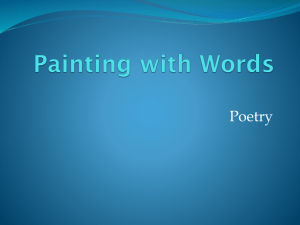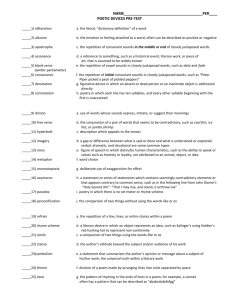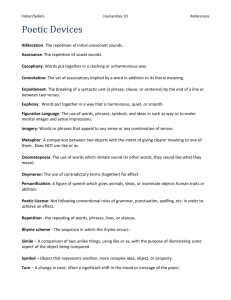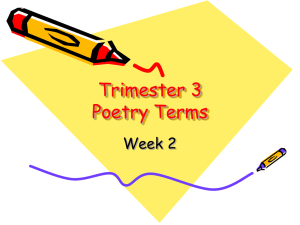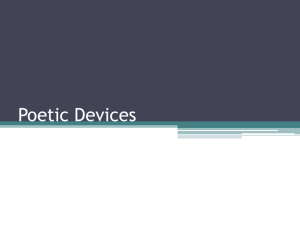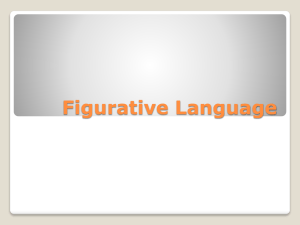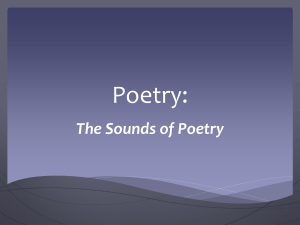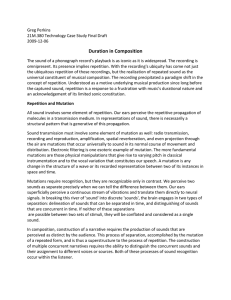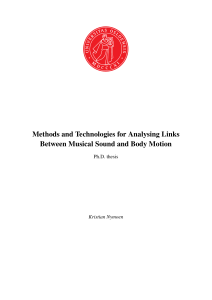Poetry Terminology
advertisement
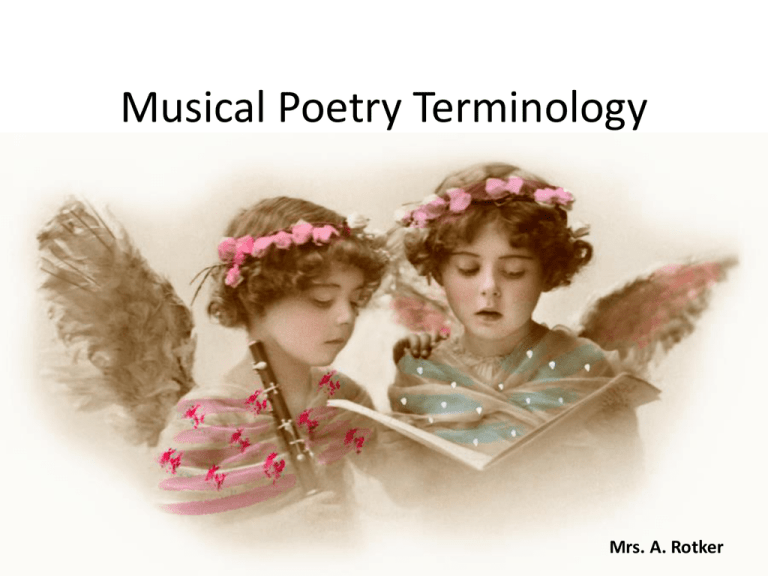
Musical Poetry Terminology Mrs. A. Rotker Weak and weary Assonance – The repetition of vowel sounds followed by different consonants in two or more stressed syllables. It is found in the phrase “weak and weary” in Edgar Allan Poe’s “The Raven.” Weak and weary consonance – The repetition of similar consonant sounds at the ends of accented syllables. The repeated t and ch sounds in “the spurt of a lighted match” create consonance. It is used to create musical effects and to emphasize particular words. Poetry- One of three major types of literature; the others are prose and drama. Highly concise, musical , and emotionally charged language. May include imagery, figurative language and rhyme. Prose- Ordinary form of written language which occurs in fiction or non-fiction. This writing is not poetry, drama or song. Repetition – The use of any element of language- a sound, word, phrase, clause, or sentence – more than once. Alliteration, assonance, rhyme, and rhythm are repetitions of certain sounds and sound patterns. BANG! Onomatopoeia – The use of words that imitate sounds. Whirr, thud, sizzle, and hiss are typical examples. Writers can deliberately choose words that contribute to a desired effect. BANG! Rhyme – The repetition of sounds at the ends of words. Meter – A poem’s rhythmical pattern. The pattern is determined by the number and types of stresses, or beats, in each line. Couplet- A pair of rhyming lines, usually of the same length and meter. It generally expresses a single idea. Stanza- Unit of a poem often repeated in the same form throughout a poem; a unit of poetic lines often separated by spaces. Sometimes named for number of lines in them (couplet=two line stanza, tercet=three lines, quatrain=four lines,etc.) Roses are red Violets are blue Sugar is sweet And so are you! Alliteration – The repetition of initial consonant sounds. Writers use alliteration to give emphasis to words, to imitate sounds, and to create musical effects. Study so these words are music to your ears. Mrs. A. Rotker
